Verifying International Diplomas: Why It’s Broken and How to Fix It
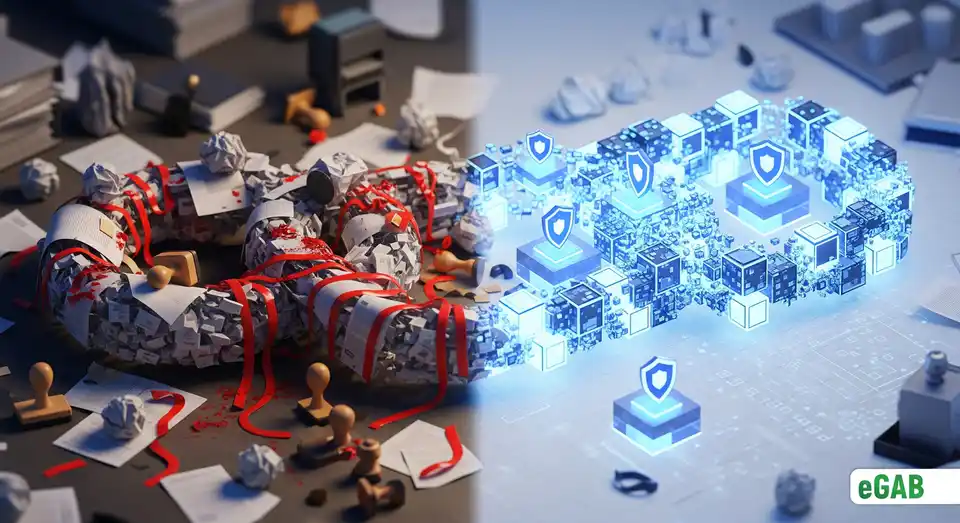
 Author:
Artem Grigoriev
Author:
Artem Grigoriev
Have you ever tried to use your hard-earned degree in another country? If so, you’ve probably been buried in a bureaucratic nightmare of maddening delays and endless paperwork. You're not alone. The traditional process for verifying international diplomas is fundamentally broken , relying on slow manual checks and international airmail that are dangerously vulnerable to sophisticated credential fraud. This archaic system creates the ultimate bottleneck, stalling careers and blocking global mobility for countless qualified professionals just like you. In this article, we'll dive into why the old system fails so miserably and reveal how a modern digital framework provides a clear, secure, and instant fix to this global problem.
📘 This post is part of our comprehensive guide to "The Problems with Paper Documents: A Complete Guide". Explore it to find answers to all your questions ;)
Why is the Traditional Verification Process So Inefficient?
Have you ever tried to verify an international diploma? In an age of instant messaging, the experience feels like you've been thrown back in time and forced to use a fax machine. The whole process isn’t just painfully slow and expensive-reflecting the true cost of paper-based workflows-it's completely out of sync with our fast-paced world. So, why does international degree verification take so long? That’s a fair question, and the answer is a logistical nightmare bogged down by manual work and red tape that creates the ultimate business process bottleneck.
If you’re wondering how you can verify a foreign diploma , the traditional journey starts with the issuing institution itself-and that's exactly where the first major delays pop up. The problem is often slow university transcript verification , a process where registrars have to physically find, copy, and then mail documents across international borders. One of the biggest hurdles is just waiting for international airmail, a step that can hold up a simple request for a staggering 3-4 weeks . And that’s just to get it to the right desk. If you're waiting on a verification from a region like South America, the process can easily drag on for over a month. After that, you're plunged into another level of bureaucracy with government authentications. This step, known as getting an Apostille / Authentication (a formal process that certifies a document's signature and seal), adds yet another bureaucratic headache. For instance, agencies like Global Affairs Canada add another 15 business days to the timeline, and that figure doesn't even include shipping. The situation is just as bad for U.S. documents, as the U.S. Department of State's Office of Authentications can add as much as 5 weeks for this step alone. Even the universities themselves can be slow; The Medical Council of Canada has reported waiting 3 months or more for schools just to process a basic verification request.
These delays highlight the fundamental challenges in credential evaluation that both individuals and employers have to deal with. To handle this complexity, many people turn to international degree verification services , but these organizations are battling their own capacity issues. On top of everything else, credential evaluation organizations are absolutely swamped. You could be waiting up to 4 weeks with World Education Services (WES), while at CGFNS International, that wait time averages 16 weeks . It can also take as long as 13 weeks with IDW Netherlands. And let's not forget the huge challenge of language barriers . An estimated 18% of all international student applications get stuck in this limbo. This happens because documents have to be officially translated and notarized, and each of these steps adds another layer of administrative work. It also raises the chances of human error and brings the entire process to a grinding halt.
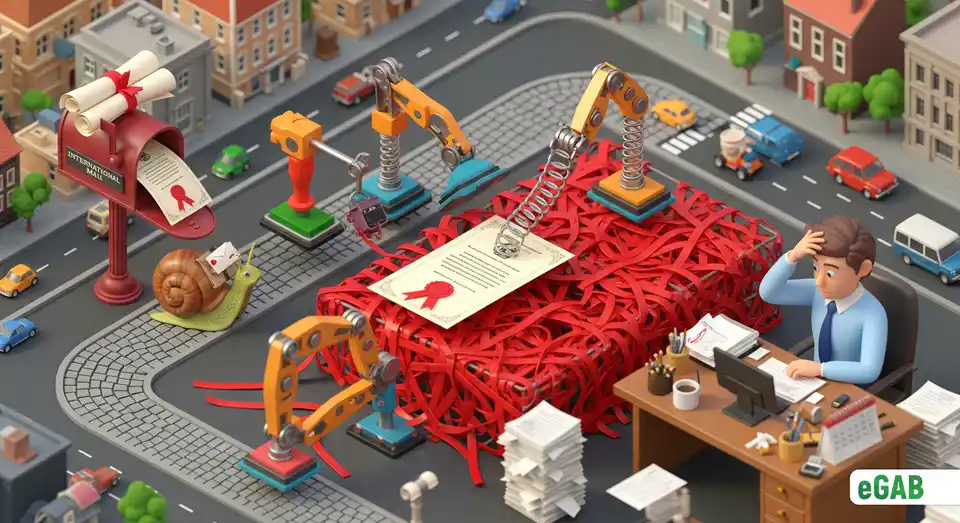
What Are the Real-World Consequences of a Broken System?
This broken system doesn't just cause headaches-it inflicts real, measurable harm on people, companies, and the global economy. The painfully slow speed of verification directly stalls critical processes, including essential functions like university admissions and hiring. These are the very real problems with academic verification that block progress. As a result, companies lose access to top talent, while students are forced to miss out on life-changing opportunities. It's not at all unusual for an international employment verification to take up to 3 weeks . On top of that, any delays or missing documents can easily spiral into serious problems-like postponed start dates, visa complications, or even rescinded job offers. This delay is a massive roadblock to effective talent acquisition and severely restricts global mobility , as businesses simply can't onboard skilled professionals fast enough.
But how do employers verify international degrees when faced with such an unreliable system? They often rely on a detailed employment background check on an international degree as part of their standard background screening , but this very process is highly vulnerable to sophisticated forgeries. The financial fallout from these vulnerabilities is catastrophic. The global market for counterfeit degrees has exploded into a $21-22 billion industry . The spread of the diploma mill (an unaccredited entity that sells worthless academic certificates online) has made credential fraud and fake diploma fraud more accessible than ever before. Meanwhile, recruitment fraud costs businesses in the UK an astonishing £23.9 billion every single year. A landmark study from the Association of Certified Fraud Examiners (Report to the Nations) uncovered a shocking statistic: organizations lose an average of 5% of their annual revenue to various forms of fraud. In the US, the consequences are even more dire, where 22% of employment fraud cases, including credential falsification, lead to losses exceeding $1 million .
The system's sheer complexity has turned it into a breeding ground for deception. With resume fraud so widespread, it's become incredibly challenging to maintain trust. Some studies even show that up to 68% of resumes include misleading information. Perhaps most alarming, a shocking 75% of university staff admit they aren't confident in their ability to reliably identify a fake certificate. This gets to the core of the challenge: how to spot a fake university certificate? Without a dependable system, even seasoned staff members are left guessing. This situation leaves honest, qualified applicants in a constant state of anxiety, their futures hanging in the balance, all because of an unpredictable system that can't effectively tell fact from fiction.
How eGAB is Fixing the Broken World of International Verification
So, how do you fix a verification process that’s completely broken ? You don’t try to patch up the old system. You leave the outdated mess behind and switch to a modern digital framework that gives you a single, verifiable source of truth. That solution is the eGAB ecosystem . By moving to its cryptographically secure digital credentials, you can change verification from a high-cost, multi-week headache into a simple, one-click confirmation. This approach provides an instant, automated check that takes mere seconds, totally eliminating the manual steps that can drag on for up to 16 weeks . These modern solutions, often called Verifiable Credentials (VCs) or simply a secure digital diploma , are a core innovation in EdTech. As a major study from the European Parliamentary Research Service on Blockchain in Education highlights, this technology creates a true "paradigm shift" that is revolutionizing how we secure and manage academic records.
At the center of this transformation is eGAB’s specialized blockchain, the CREST Chain . But how does this blockchain technology prevent academic fraud? It creates a decentralized, distributed ledger where every credential becomes a permanent, unchangeable record, making forgery impossible. The digital credentials issued on the eGAB platform also completely remove the language barrier. They use standardized data formats that can embed pre-verified translations, which clears the bottleneck currently stalling 18% of international applications . Even better, this technology dismantles the $22 billion fake degree market by creating immutable credentials that are virtually impossible to fake, protecting businesses from the billions they lose to fraud. This naturally leads to a critical question: are these digital diplomas valid? Absolutely. Their authenticity is cryptographically proven, which makes them far more trustworthy than their paper counterparts. Graduates can securely store their achievements in a personal digital wallet , giving them complete control over who views their information.
The eGAB ecosystem empowers verifiers by taking all the guesswork out of the process. It directly solves the confidence crisis felt by the 75% of staff who are unsure how to spot fakes. The platform guarantees the authenticity and integrity of every diploma because it uses a tamper-proof digital ledger , which provides absolute certainty for both applicants and employers. This innovation offers a clear answer to the question, what is the fastest way to get credentials evaluated? The solution isn't speeding up the old system but replacing it with an instant, digital one like eGAB. Ultimately, this technology is the key to verifying international diplomas with both confidence and speed, preventing hiring delays and guaranteeing that talented people can connect with incredible opportunities, wherever they are in the world.
Why It Matters: The switch to instant, verifiable credentials on the eGAB platform is about far more than just convenience. It’s about fundamentally rebuilding trust and efficiency in the global talent market. By getting rid of the risk, cost, and inefficiency of traditional methods, we're creating a superior system that's more secure, interoperable , and equitable -one where skills and qualifications are recognized instantly and without a hint of doubt.
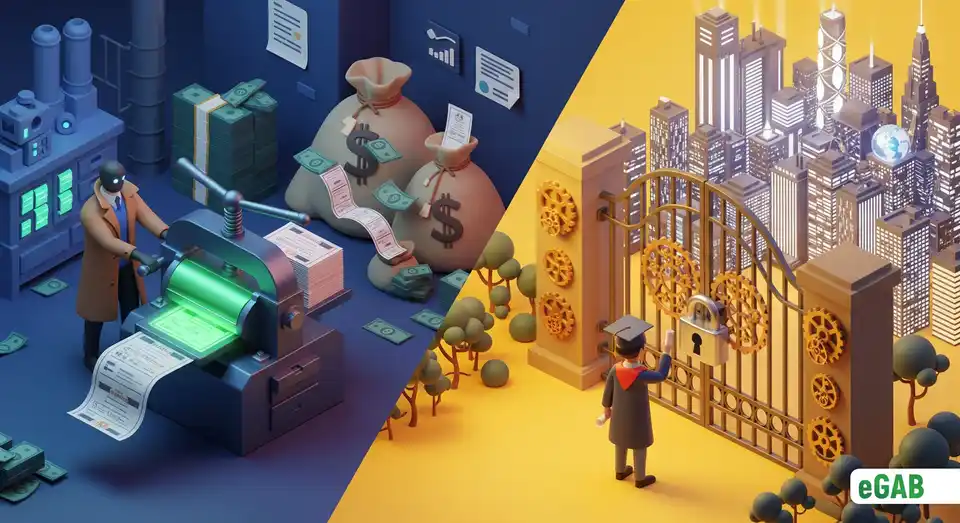
How eGAB Creates a Global Standard for Instant Verification
Remember the last time you had to verify an international credential? The weeks of waiting, the expensive courier fees, the endless back-and-forth with university registrars-it’s a global mess of inefficiency. We built eGAB specifically to solve this problem by creating a single, decentralized source of truth that works as a universal standard for verification.
We’ve eliminated the need to chase down international registrars or deal with complex third-party services. Instead, your graduates get a secure, verifiable digital diploma that they can store in their personal digital wallet. This gives them permanent, portable, and immediate access to their own achievements. They're no longer dependent on an institution to act as the gatekeeper to their own records.
The impact on verification is huge. The platform collapses that agonizing, weeks-long process into a single, instant action. Employers, institutions, and government agencies anywhere in the world can now confirm a diploma’s authenticity in seconds with a simple scan. We replace ambiguity and delay with certainty and speed, finally allowing talent to move as freely as information should.
Next Step: Encourage your graduates to add their verifiable eGAB credential link to their LinkedIn profiles and resumes. This simple action turns their professional profile into a trusted, one-click verification tool, giving them a significant competitive advantage in the global job market.
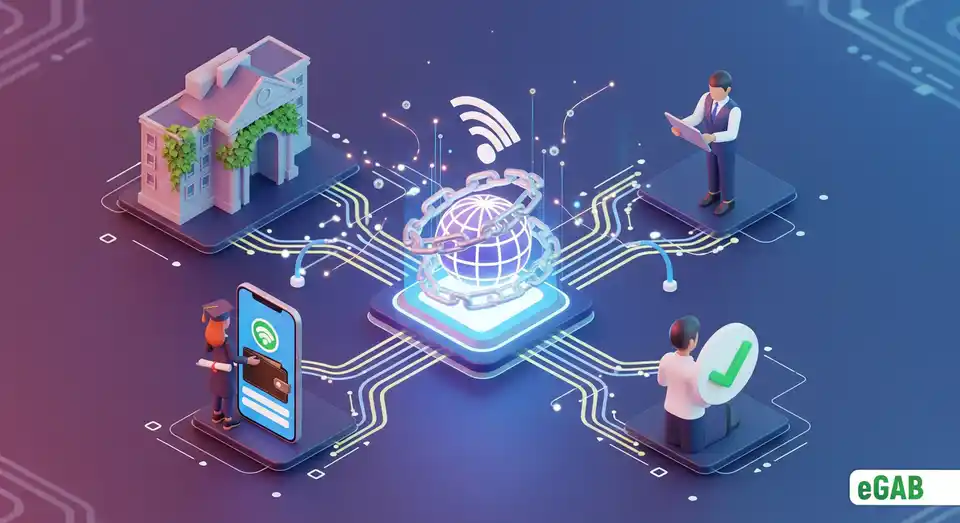
Summary: From a Broken System to a Future of Trust
So, what does all this mean for you? Let's break it down. The traditional system for verifying international diplomas isn't just outdated-it's broken, creating a crisis of trust that holds everyone back. We’ve all seen how a simple verification turns into a multi-month nightmare, thanks to a chaotic mix of slow university registrars, weeks-long international shipping, and bureaucratic hurdles like the Apostille (which is just a fancy certification that a public document’s origin is authentic). But the damage goes far beyond inconvenience. This flawed process actively stalls talent acquisition , enables a staggering $22 billion global market for counterfeit degrees , and fuels rampant credential fraud that costs organizations millions. What's most alarming? The system is so unreliable that a shocking 75% of university staff admit they can't confidently spot a fake university certificate , leaving honest applicants and employers in a constant state of uncertainty.
This is the exact challenge the eGAB ecosystem was built to solve. It doesn't just patch the old system; it replaces it entirely. eGAB makes the shift to cryptographically secure Verifiable Credentials (VCs) -think of them as tamper-proof digital credentials you can verify instantly. Using its specialized blockchain, eGAB dismantles these old problems one by one. It powerfully answers the question of how does this blockchain technology prevent academic fraud? It creates an immutable, tamper-proof digital ledger , making forgery a practical impossibility. Instant, one-click verification replaces the agonizing wait, delivering the fastest way to get credentials evaluated . And what about language barriers, which stall a huge 18% of applications? They vanish thanks to standardized data formats . Most importantly, eGAB restores confidence by offering an undeniable source of truth. By giving you, the graduate, complete control through a secure digital wallet , we help rebuild trust and give employers the absolute certainty they need. This paves the way for a future where your skills are recognized instantly, your mobility is seamless, and your opportunities are truly global.
➡️ Where to from here? The breakdown in verification has serious legal consequences. Learn if your paper archives are a legal time bomb under GDPR.
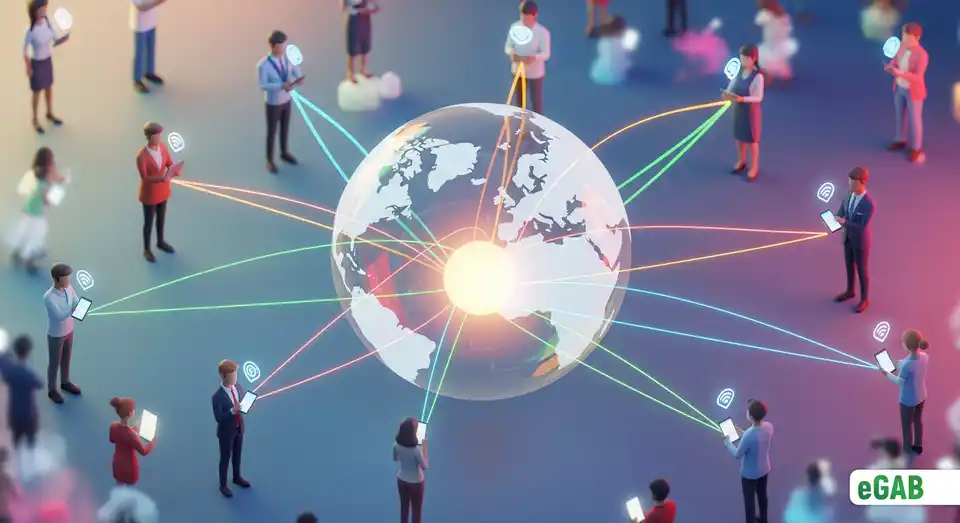
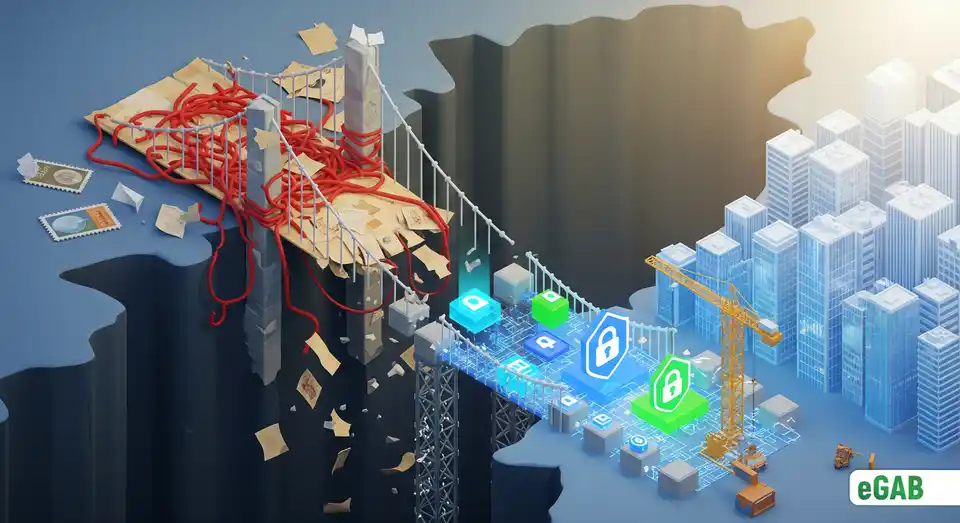
The True Cost of Paper Documents: Calculating the Hidden Expenses in Your Document Workflow
Fire, Flood, or Loss: How to Create a Disaster-Proof Document Storage Strategy
How Much Time Are Your Employees Wasting on Paperwork? (A Productivity Analysis)
Is Your Office Drowning in Paper? The Real Estate Cost of Document Storage
Beyond the Shredder: 5 Critical Data Security Risks of Paper Documents
